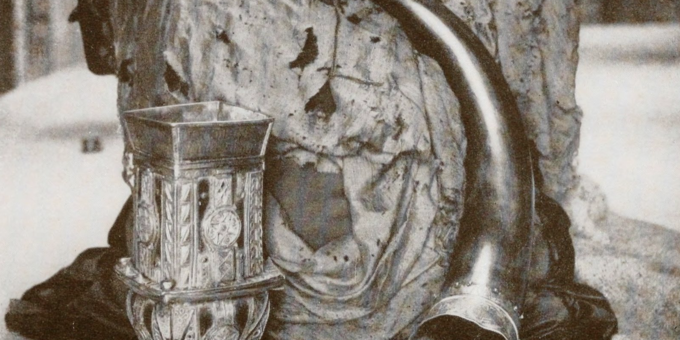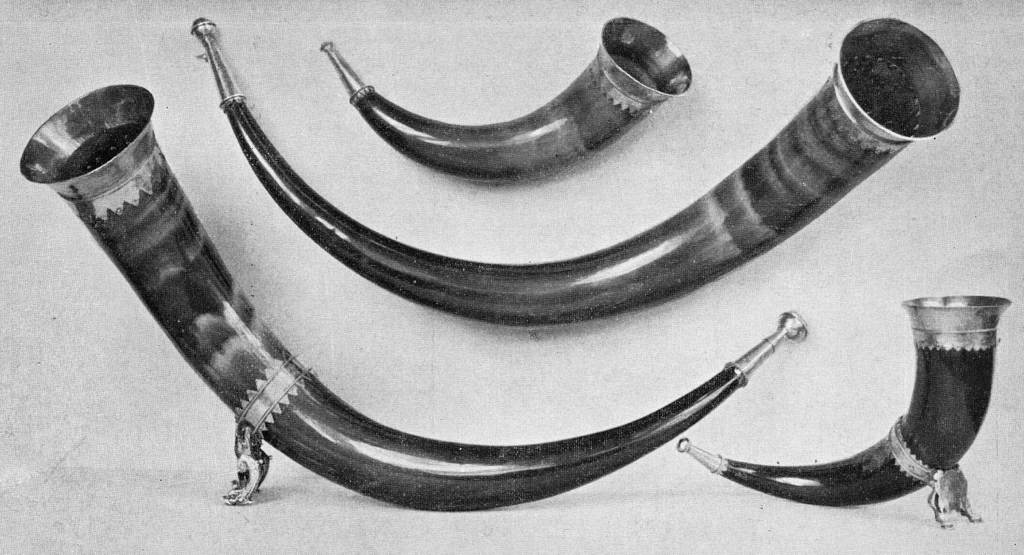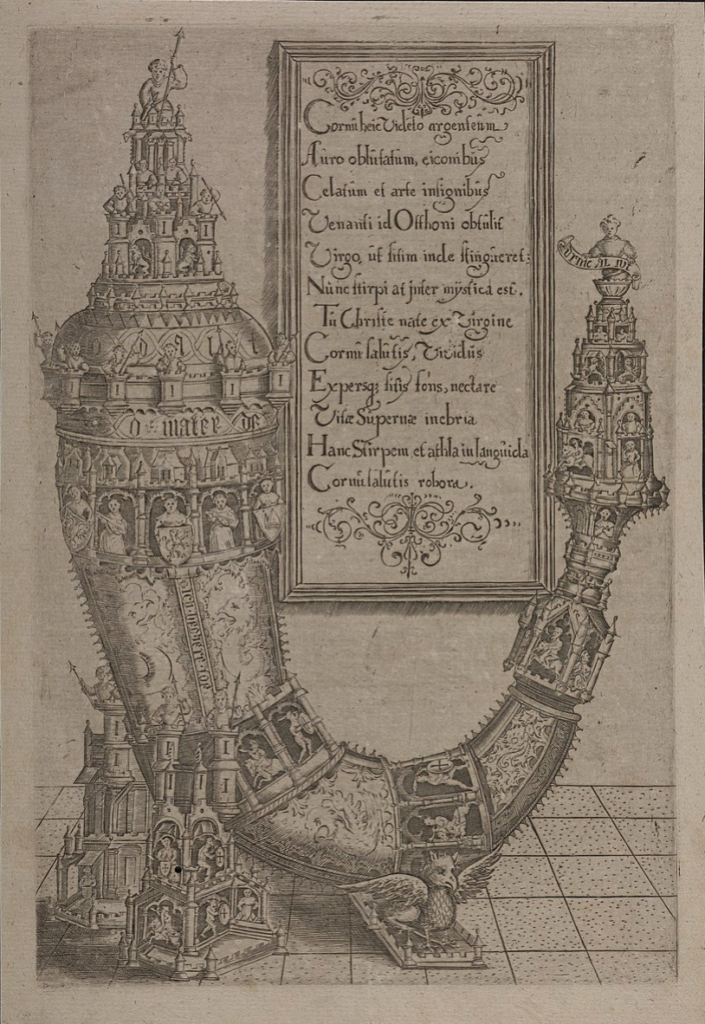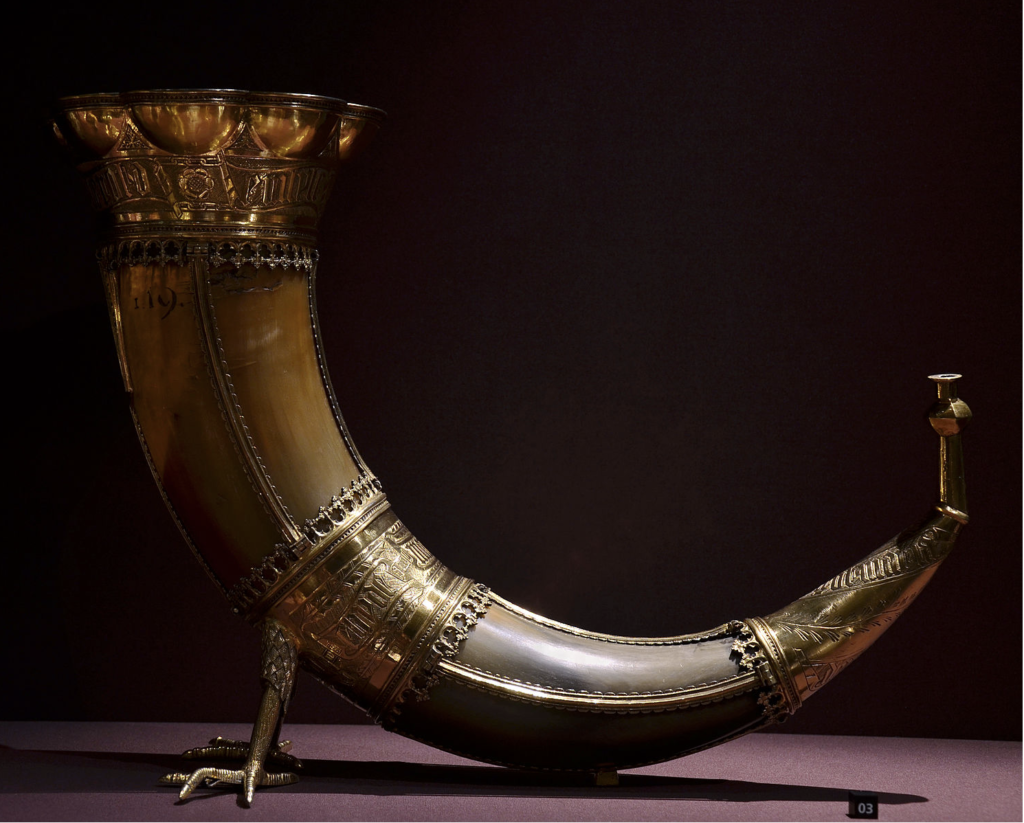
The drinking horn was an important symbol in Norse culture, and it was used for a variety of purposes. This article will explore the significance of the drinking horn in Norse culture, and it will also discuss some of the different ways that it was used.
History
The history of the drinking horn is a long and varied one. A variety of cultures used drinking horns in many ways. They were used as drinking vessels, in religious ceremonies, and as containers for various substances.

One of the earliest references to a drinking horn comes from the Greek historian Herodotus. He described a drinking horn made of rhinoceros horn that the Scythians used. The Scythians were nomadic people who lived in Russia and Ukraine.
The drinking horn continued to be used by various cultures throughout the centuries. The Vikings, for example, used drinking horns made from animal horns. In addition, they would often carve designs into the horns to make them more decorative.
During Viking ceremonial feasts, Tony Allan (The Vikings: Life, Myth, and Art) explains:
“An important part of the proceedings was the drinking of toasts to dead ancestors and to the gods – these would be proposed by the leading figure present. The ale would circulate in great metal rimmed drinking horns passed from hand to hand among the guests…”
Today, many cultures use the drinking horn as a ceremonial drinking vessel, especially within the Pagan and Heathen communities.

Symbolism
The Viking drinking horn has long been associated with the culture and mythology of the Viking people. In Norse mythology, the drinking horn was often associated with the god Odin, who was often depicted carrying a drinking horn called the Gjallarhorn.
According to Benjamin Thorpe (Northern Mythology):
“Under the second root is Mimir’s well, in which wisdom and genius are concealed. Mimir, the owner of the well, is full of wisdom, because he drinks every morning of the well from the horn Gioll (Giallar-horn). All-father once came, and craved a draught from the well, but got it not before he had given an eye as a pledge; whence it is said the Mimir drinks mead every morning from Valfather’s pledge.”

The drinking horn was also seen as a symbol of strength and masculinity and was often used in ceremonies and rituals to honor the gods.
Today, the Viking drinking horn is often seen as a symbol of Norse culture and mythology and is often used as a decorative item or a drinking vessel. The horns are usually made from various materials, including wood, metal, and glass, and can be decorated with intricate designs and patterns. In addition, the horns are sometimes used as a ceremonial drinking vessel at Viking-themed events and gatherings.
Making a Viking Drinking Horn
It is possible to make a Viking drinking horn from various materials, but the most common is a cow horn. The first step is to clean the horn and remove any tissue or bone still inside. This can be done by boiling the horn for several hours or soaking it in a strong acid such as hydrochloric acid.
Once the horn is clean, it needs to be dried. This can be done by boiling it again or by using a hairdryer. The horn must be completely dry before it can be carved.
The next step is to carve the horn. This can be done with various tools, such as a knife, a saw, drill, and high-quality woodcarving sets.
The final step is to seal the horn. This can be done with a number of sealants, such as polyurethane or epoxy.

